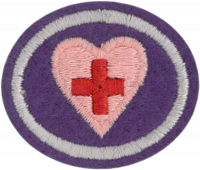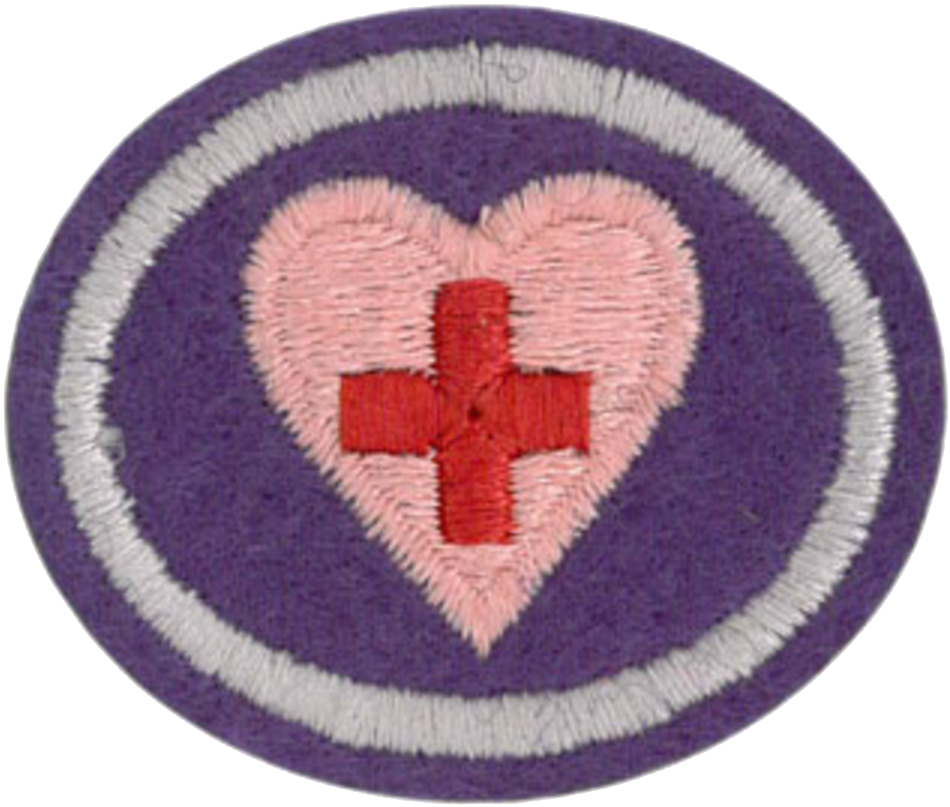Difference between revisions of "AY Honors/First Aid/Requirements/es"
(Created page with "</noinclude>La respuesta adecuada para las emergencias de asfixia. <noinclude>") |
(Updating to match new version of source page) |
||
| Line 67: | Line 67: | ||
:<b>c. <section begin=req8c /><noinclude><div lang="en" dir="ltr" class="mw-content-ltr"> | :<b>c. <section begin=req8c /><noinclude><div lang="en" dir="ltr" class="mw-content-ltr"> | ||
| − | </noinclude> | + | </noinclude>The appropriate response for anaphylactic shock. |
<noinclude> | <noinclude> | ||
</div></noinclude><section end=req8c /></b> | </div></noinclude><section end=req8c /></b> | ||
Revision as of 21:08, 4 October 2023
Nivel de destreza
2
Año
1938
Version
29.12.2025
Autoridad de aprobación
División Norteamericana
Instructor requerido
1. Aprender primeros auxilios significa que puede ser llamado a ayudar a alguien que se enfrenta a situaciones de vida o muerte. Memorizar al menos dos textos que podría compartir con alguien en una crisis física y espiritual mientras espera por ayuda médica profesional.
Completar el requisito 2 O 3-29.
2. Si reside en los Estados Unidos o en otro país en el que se imparte instrucción de la Cruz Roja o de la Asociación Estadounidense del Corazón, tomar la clase de Primeros Auxilios de la Cruz Roja y pasar satisfactoriamente el examen de la Cruz Roja en Primeros Auxilios y recibir su certificado. O tomar los Primeros Auxilios a través de la Asociación Estadounidense del Corazón y pasar satisfactoriamente el examen de Primeros Auxilios y recibir su certificación. En los países que utilizan St. John Ambulance, tomar la clase y pasar el examen y recibir su certificado.
3. Describir cómo reconocer las posibilidades de emergencia en las que puede ser necesario prestar primeros auxilios hasta que llegue una ayuda más avanzada y la responsabilidad de dar primeros auxilios.
4. Explicar la importancia de asegurarse de que la escena es segura antes de administrar los primeros auxilios. Pensar en una lista de peligros que podrían ocurrir en una variedad de situaciones.
5. Conocer la información de contacto para emergencias en el área donde vive. Hacer una lista de la información necesaria para contactarse con ellos en caso de emergencia. Ver un video educativo acerca de cómo comunicarse con los servicios de emergencia o entrevistar a un paramédico o a un operador de servicios de emergencia médica.
6. Conocer los ejemplos de cuándo es necesario llamar al número de contacto de emergencia. En cada una de las siguientes situaciones, dramatizar una llamada de emergencia (¡NO llame al número durante la dramatización!)
- La víctima no responde a la voz ni al tacto
- Confusión, nivel de conciencia
- Malestar en el pecho, posible ataque cardiaco
- Signos de derrame cerebral
- Problemas respiratorios
- Lesión o quemadura grave
- Hemorragia grave
- Convulsión
- Parálisis
- Envenenamiento de una parte del cuerpo
- Choque eléctrico
7. Explicar la importancia de usar guantes y otros equipos de protección individual (EPI) cuando se prestan primeros auxilios.
- a. Demostrar ponerse los guantes y quitárselos de manera segura.
- b. Comprender la importancia del seguimiento del lavado con agua y jabón, y demostrar cómo lavarse las manos correctamente.
- c. Explicar por qué es importante lavarse la piel, los ojos, la nariz y/o la boca si los fluidos corporales han entrado en contacto con alguna de estas áreas.
8. Conocer las posibles respuestas de primeros auxilios a las siguientes emergencias respiratorias y demostrar:
- a. Cómo ayudar a una persona a utilizar un inhalador.
- b. La respuesta adecuada para las emergencias de asfixia.
- c.
The appropriate response for anaphylactic shock.
Understand what CPR is and explain the basics of using chest compressions as needed.
Know and explain the difference between sudden cardiac arrest and heart attack. What are the symptoms of a heart attack?
What is fainting? Know and demonstrate the first aid procedures to assist someone who has fainted.
Know the signs and symptoms of a person with low blood sugar and what first aid actions to take.
What is a stroke? What are the signs and symptoms?
What is a seizure? Role-play how to help a person during and after a seizure.
Describe the difference between minor bleeding and severe bleeding. Know when to call the emergency contact number for bleeding. Practice the proper response for controlling bleeding using dressings and pressure.
Know when and how to properly use a tourniquet. Using a chart, mannequin or other instructional device, demonstrate where the various pressure points are on a body and how to properly apply pressure.
Know the causes of shock and demonstrate proper treatment.
Explain the first aid procedure in assisting someone for each of the following:
- a.
With a nosebleed
- b.
Bleeding from the mouth
- c.
With a tooth emergency
19.
Using a peeled grape or boiled egg, demonstrate how to help with an eye injury - both physical and chemical.
20.
How do you stop external bleeding from a puncture wound? Explain why you should not remove any object stuck in the body.
21.
What do you do when there is a traumatic amputation emergency? Practice the correct way to handle the amputated part.
22.
Know the proper treatment for head, neck, or spinal injuries. Under what circumstances should you move or not move a person with a possible head, neck, or spinal injury?
23.
If advanced emergency assistance will not be available for a while, you may need to apply dressing, bandages and splints to be able to move a victim safely. Know and demonstrate the following bandages and splints:
- a.
Open and closed spiral bandage
- b.
Figure-eight bandage
- c.
Fingertip bandage
- d.
Cravat bandage for head wounds
- e.
Upper arm splint
- f.
Forearm splint
- g.
Ankle splint
- h.
Arm sling
24.
Describe the proper treatment for burn injuries and electrical injuries.
25.
List the actions to take in the case of bites (animal, insect, snake, spider, etc.) and stings (scorpion, insect, etc.).
26.
Know the proper first aid for tick bites.
27.
Discuss with your instructor how to recognize the symptoms for heat-related emergencies and cold-related emergencies. Know and demonstrate the proper responses for each.
28.
Know what to look for to identify a suspected poisoning victim. Discuss the importance of scene safety with your instructor. Why should you stay out of an area if you see multiple people who may have been exposed to poison? Learn the number for poison control in your area.
29.
When a victim must be moved or carried to safety, know the following rescue carries and demonstrate each of the following:
- a.
Shoulder drag
- b.
Blanket drag
- c.
Two-person carry
- d.
Carry by extremities
- e.
Improvised litter
- f.
Three-person hammock carry
- g.
Litter carry
Nota:
Whether obtaining certification or completing the requirements listed above, each youth learning first aid at this level should know where the club’s, school’s and/or church’s first aid kit is stored and how to use it. All first aid kits should include gloves and eye protection along with the regular supplies.


